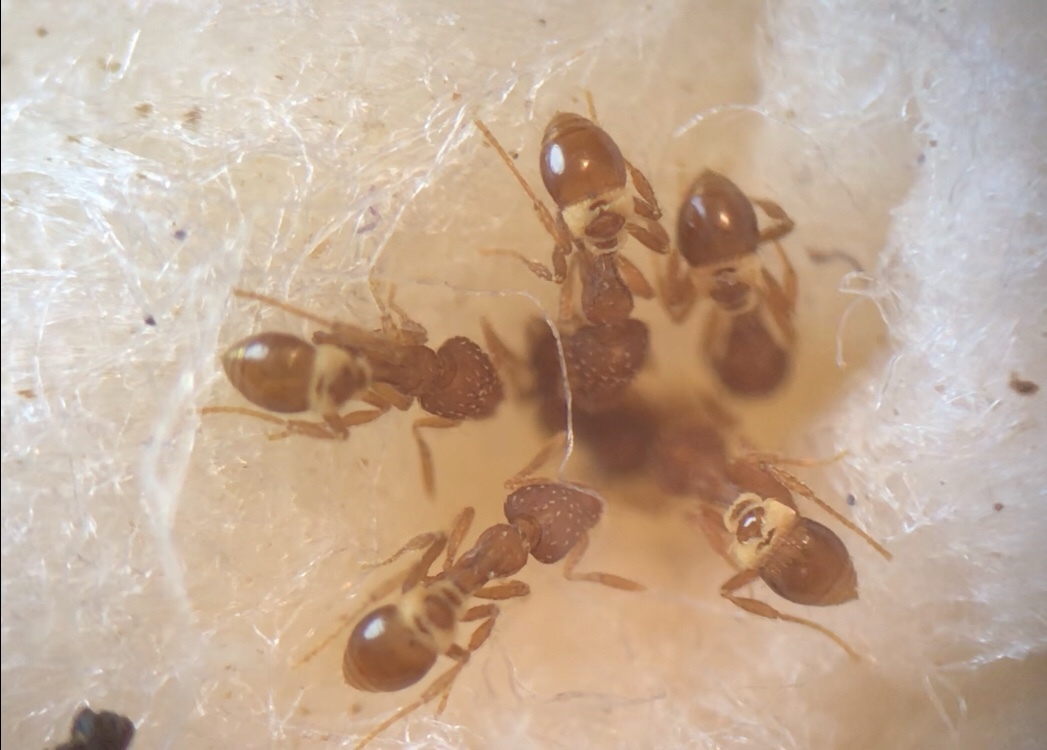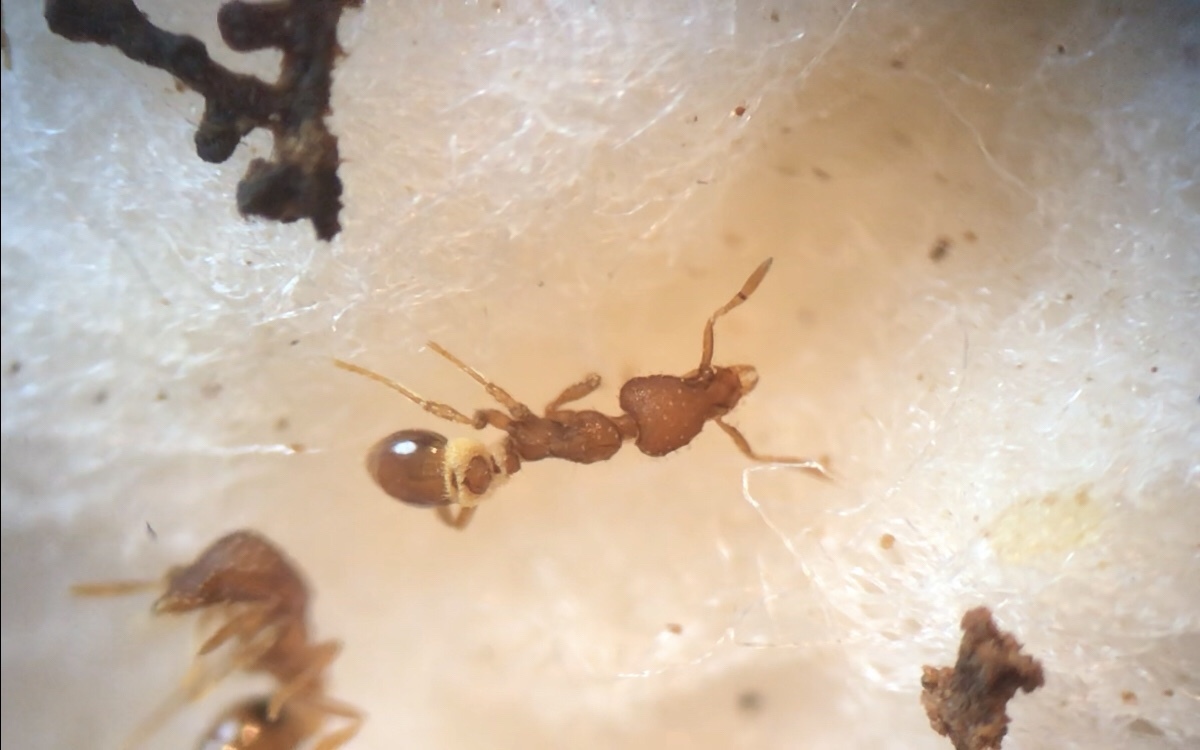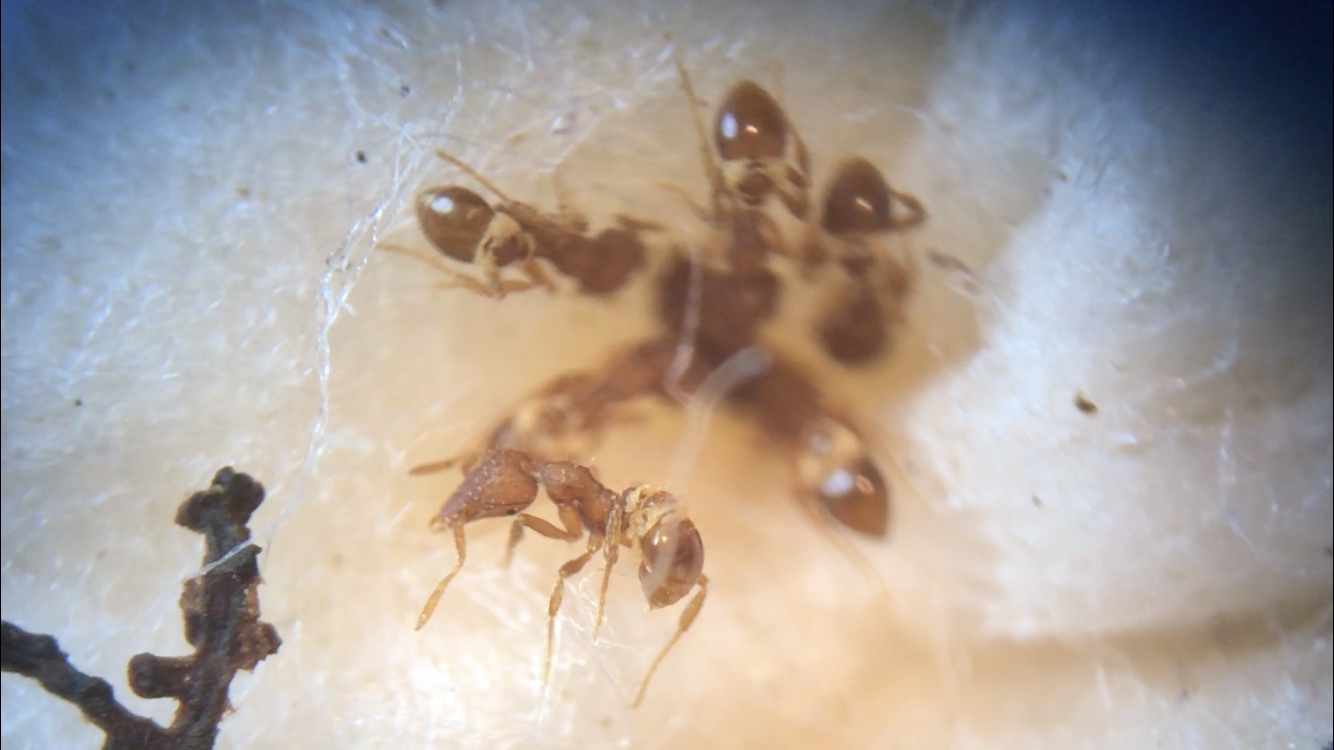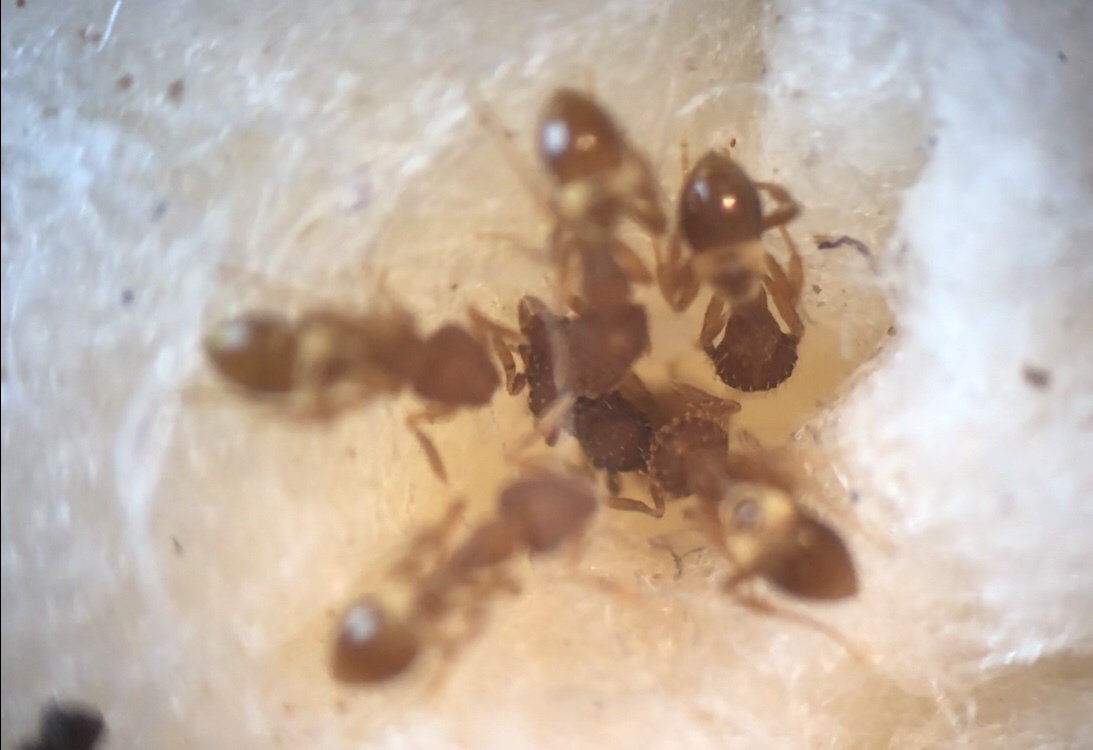About 2 meters from where I found the Strumigenys brevisetosa colony I found these pretty little gals, Strumigenys reflexa. Mostly uncommon throughout their range, I find them to be at least moderately common around my house, with workers found in multiple locations, including alongside my driveway. This, however, was my first time finding a colony. They were located at the base of an American holly tree in the heavily wooded lot beside my house. I've been trying to do as much collecting from this area as possible before they clear it out later this year, and I found these alongside a few Strumigenys pilinasis (=ohioensis) workers. As I had other things to do, I scooped up as much material from the area as possible and ran it through my Berlese funnel, where the rest of the colony appeared in the collection container at the bottom a few days later, including the queen. A few S. pilinasis workers showed up too, but no queen was present. I'll probably try and collect them later. Anyways, within the first half hour of me moving the colony into their temporary holding container, the queen had already laid an egg, which I believe they later ate. I gave them three springtails, and they have eaten all but one, that one possibly being of a species they do not consume, as it is extremely jittery and flighty, not staying put when the Strumigenys approach like other springtails do. Anyways, it's always great to try and keep a species I've never owned before, and I hope they take to captivity well.

The head of Strumigenys reflexa showing the sets of backward-curving hairs unique to this species
Edited by Ferox_Formicae, May 17 2021 - 4:50 AM.






















